Cycling in Istria – the wonders of St. Foška, the Montenegrins who settled in Istria in the 17th century in the Venetian Republic, the mysterious mummies in the church in Vodnjan and the exciting life and cruel death of Baroness Barbara Hiterot, once the owner of Red Island, situated across Rovinj.
What do Vojvodina and Istria have in common and why are they also different? I have had the opportunity to cycle around the two regions that have been often “twinned” over the past twenty years and saw many things that otherwise cannot be seen from a car, bus or boat.
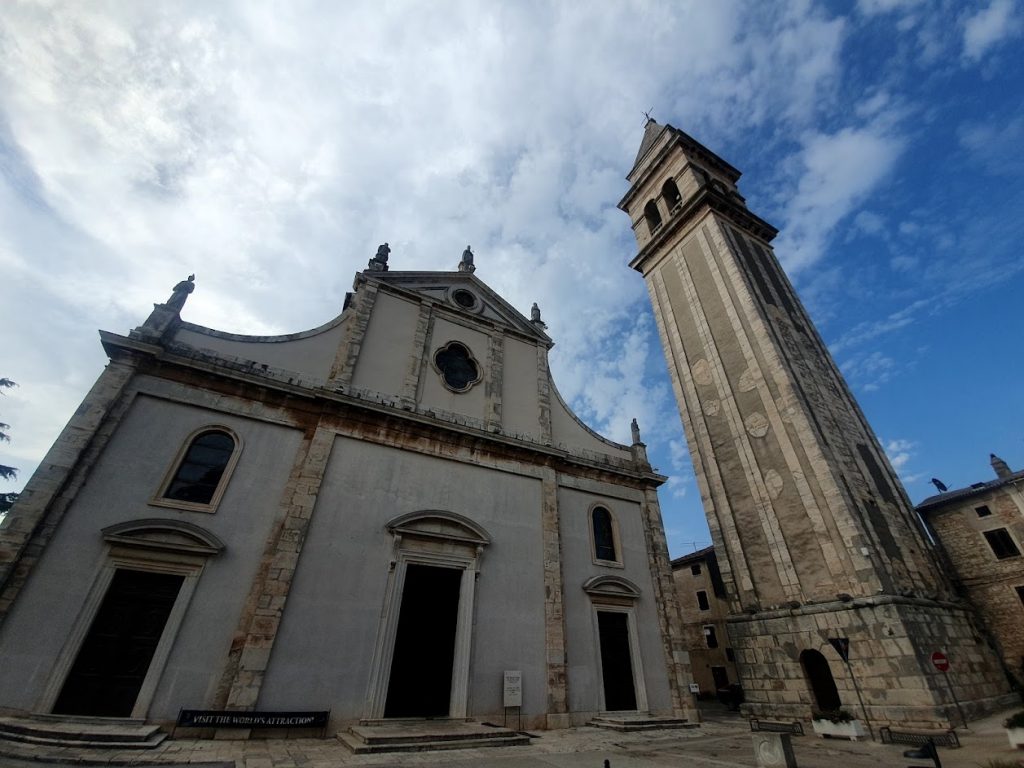
The similarities are mainly reduced to the historic legacy of Istrians and Vojvodina, namely multiculturalism of towns and villages, multilingual signs, every place having a Marshal Tito Street and monuments erected in honour of partisans, and kind and peaceful locals. The differences are much more contemporary. While driving through Istrian towns and villages, I did not see any illegal dumps and dare I say it, not even a bottle or a plastic bag on the ground, even though tens of thousands of tourists were flocking around. On the other hand, in Vojvodina, wild landfills desecrate the appearance of even the most idyllic landscapes. The land is more fertile in Vojvodina than in rocky and “lean” Istria, which is nevertheless a much wealthier region today. There are many reasons for that – proximity to countries like Austria and Italy is one of them and the lack of landfills and garbage is only the final product of mental and geographical proximity to Europe.
“Most of my workers come from Serbia – from chambermaids that come from Niš to waiters from Novi Sad. They are all very hardworking. We are happy with their work and obviously, they are happy with us as employers, otherwise, they wouldn’t be working for us for years now,” says the owner of the Menenghetti Hotel, Miroslav Plišo, while we were drinking coffee under an olive tree.
Miroslav was a lawyer from Zagreb who chose to replace drab court chambers with perhaps the most beautiful place in our region. He is certainly one of the best people to analyze tourist opportunities on the Adriatic with. Last year, when Dalmatia, Montenegro, Greece, Italy, Spain and Turkey experienced a huge decline in the number of tourists, Istria had a satisfactory tourist season. This year, says Miroslav, despite the global bogey called the Delta strain of the coronavirus, Istria is approaching the numbers of tourists, overnight stays and income from 2019.
To avoid being totally spoiled by the swimming pool, olive oil and Malvasia wine from Miroslav’s hotel, I decided to visit several nearby villages and towns on a rented bicycle.
Although it seemed much flatter when driving a car, Istria is hillier than most of Vojvodina, so you need to be at a slightly higher fitness level, especially on the ascents to the cities that are usually on the hills.
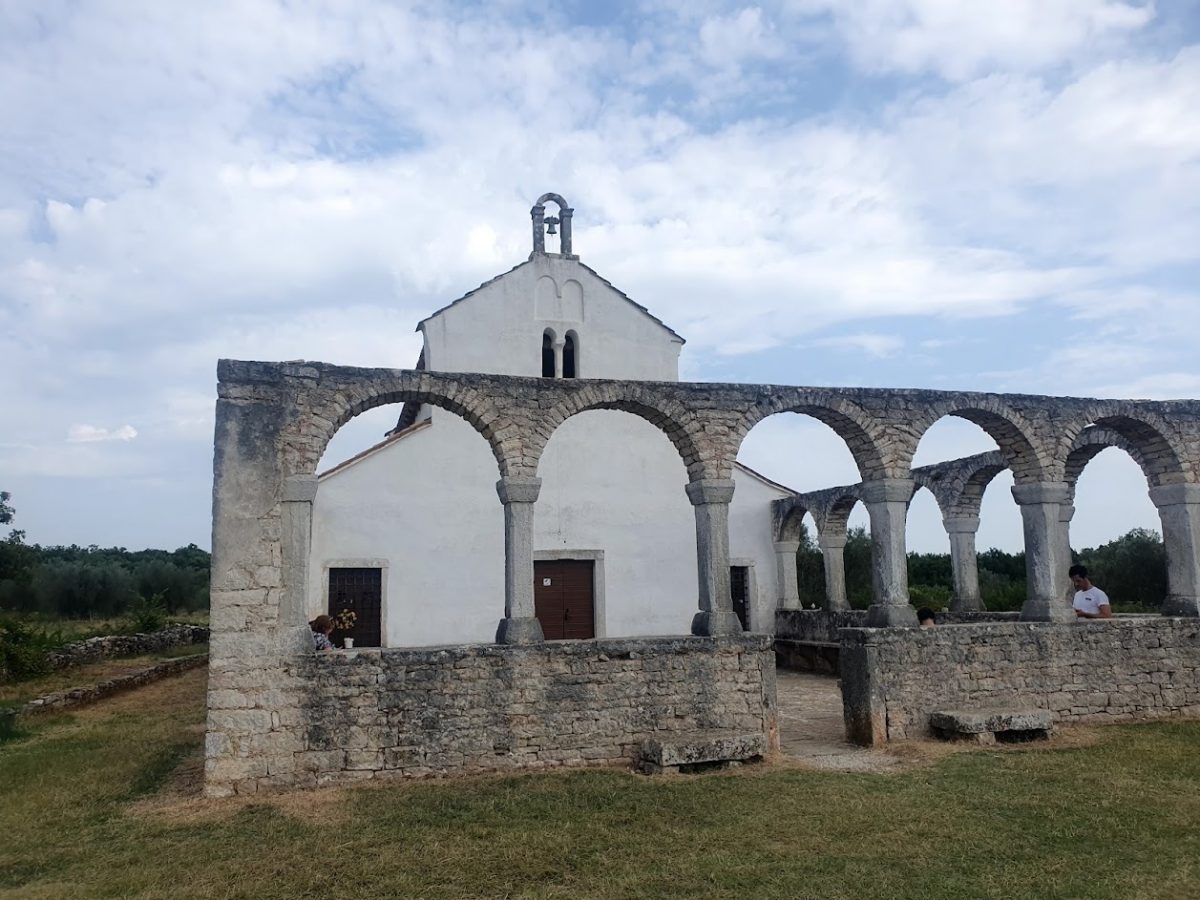
I did not plan to visit it, nor had I heard of it before, however, the signpost saying “Sveta Foška” (Saint Foška) led me to turn my bicycle to the left between Barbariga and Peroj and head uphill in the rugged landscape.
“The Sveta Foška wonder by the sea”, they say in Istria. This 11th-century church attracts thousands of pilgrims from all over the world who believe in its miraculous powers. The church was locked, so I managed somewhat to photograph the interior through narrow windows in which believers leave photos of family members who need healing. Apart from the photos, there are also a lot of candles, flowers, children’s toys left there… Three families with small children were hanging around the locked church.
“The Sveta Foška wonder by the sea”, they say in Istria. This 11th-century church attracts thousands of pilgrims from all over the world who believe in its miraculous powers”
One local I talked to tells me that people come here from all over the world. Even some women fell pregnant after visiting the church, despite not being able to before. To his knowledge, 26 women became mothers after coming here. A couple of years ago, several families arrived from Russia with an eight-year-old boy, Alyosha. At one point, the child flew out of the church in tears. His mother asked him what had happened, and the boy said in shock that he had seen Sveta Foška’s head being cut off. Other people had the same vision in the church.
The church is secluded – half a kilometre away from the nearest houses. It can be reached by a macadam road after turning off the Vodnjan – Bale road, and going further towards Batvači. Despite the church being so dislocated, both the village and the church have been frequented by many believers since the mid-1970s, but also people who just want to experience a surge of strong energy.
Sveta Foška was born 1,700 years ago in Ravenna, Italy. It was a time when Christians were persecuted and killed. But Foška, then a 15-year-old girl, decided to live according to Christian principles which was a disgrace for her whole family. The father renounced her and reported her to the authorities, also denouncing her as a Christian. Together with other Christians, the authorities tortured her, trying to expel “the heresy” out of her head. They beheaded her and threw her body into the sea. Legend has it that Foška’s body floated to the shores of North Africa, where it was celebrated until the arrival of the Arabs. Then a man named Vitale transferred the relics of Saint Foška to Torcello, an island in the Venetian lagoon. In 1220, a church was built on that island in her honour. Sveta Foška is revered as a protector against headaches, arthritis, rheumatism, depression and a patron saint of young people. The Sveta Foška pilgrimage starts in mid-February every year.
The descent goes much faster than the ascent, so in no time, I found myself in front of the Peroj road sign. This town is located on the southwest coast of Istria and has a great view of the Fažana Channel and the Brijuni Archipelago.
Peroj was already a famous summer back in old Roman times when it was called Praetoriolum or Casale Petriolo. The architecture of the old town is reminiscent of other Istrian places with old stone houses with ballatoios (a mezzanine typical of old Istrian houses) and stone benches in front. As early as 1197, a settlement called Pedrol is mentioned to be located here.
“On July 21, 1657, fifteen families from Montenegro moved to Peroj. The most important and only document from that time is the so-called Peroj Charter by which this village, surrounding pastures and forests are given to immigrants from Montenegro”
In the 12th century, Istria was ravaged by plague and cholera, which devastated towns and villages here. The Venetian Republic, which ruled these areas at that time, was trying to settle in Istria, including Peroj, where the natives became extinct. Attempts were made to settle Bologna farmers and craftsmen on two occasions with Greek families from Cyprus and the Peloponnese. These attempts were unsuccessful because the would-be settlers all returned to their homelands. Then the cunning Venetians remembered a much more resistant strain.
On July 21, 1657, fifteen families from Montenegro moved to Peroj. The most important and only document from that time is the so-called Peroj Charter by which this village, surrounding pastures and forests are given to immigrants from Montenegro. The Montenegrins of the Orthodox faith were not allowed to build a church here but were given the church of St. Nicholas in Pula, which was the Greek Orthodox Church. In 1788, the people in Peroj were allowed by the Venetian Republic to build their own church.
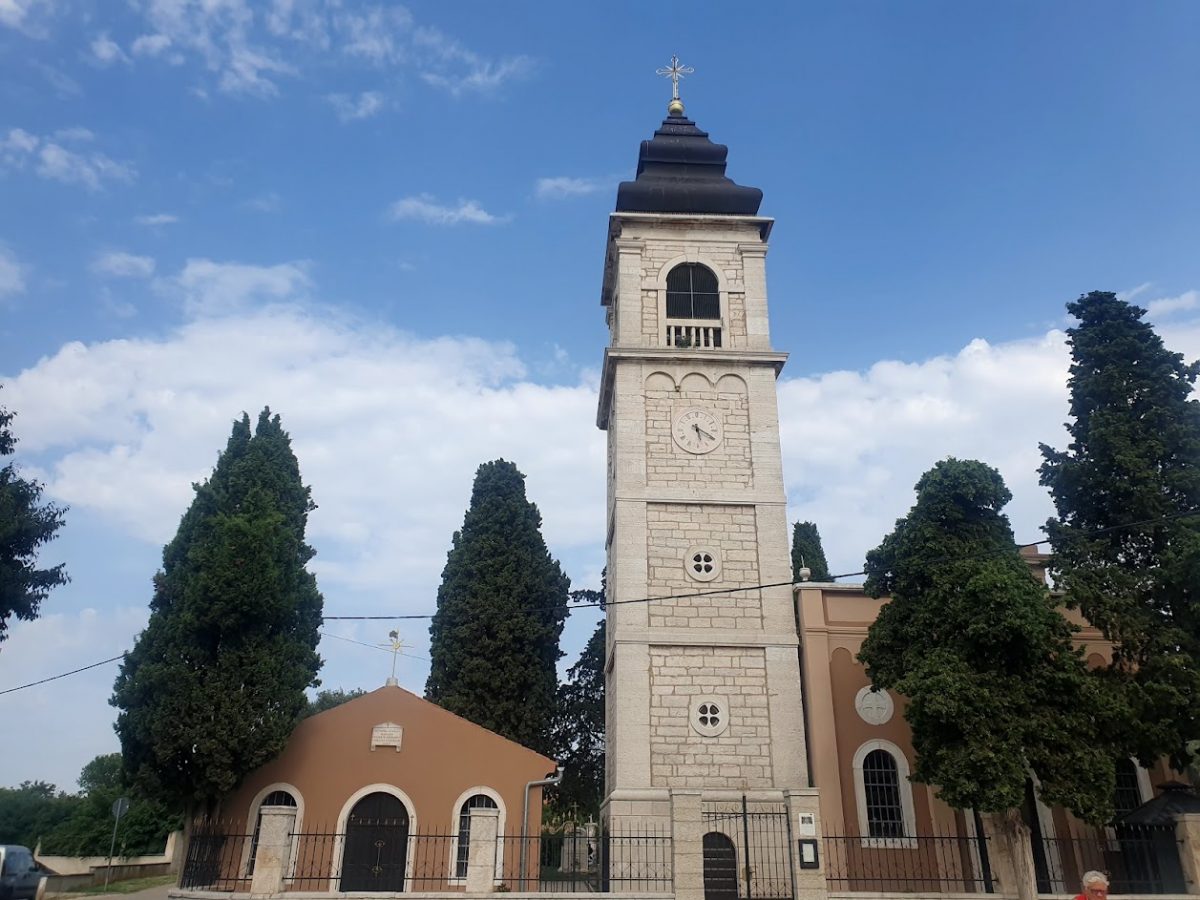
Church of St. Spiridon takes its present form in 1834. The chapel was built in 1880 and the bell tower in 1860. It is interesting to note that the Montenegrins in Peroj have kept their Orthodox (Serbian Orthodox Church, the Zagreb-Ljubljana Metropolitanate) language and Cyrillic alphabet to this day, for 350 years, that is inscribed on their tombstones. Indigenous Peroj people nurture their customs, church celebrations and speak the Peroj dialect.
In the cemetery behind the church, I also found some monuments that quote Petar Petrović Njegoš. Among the monuments, I notice one that reads: “In memory of the people of Peroj who died and perished in the Great War 1915-1918.” Yes, Italy entered the First World War only in 1915, after the Treaty of London stated that Dalmatia, Istria, Trieste and South Tyrol would become Italian territories.
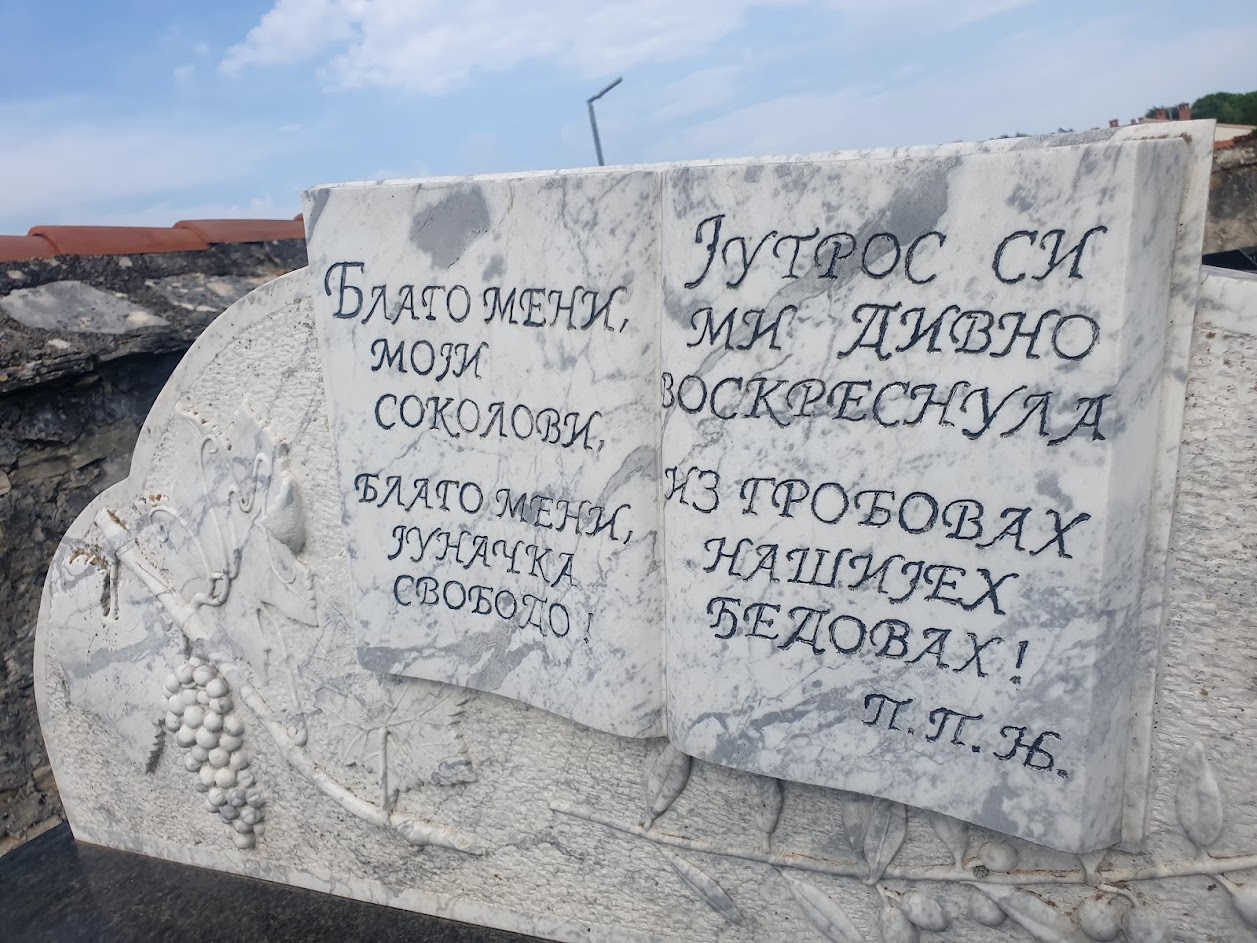
Across the church is a monument to the fallen Allied soldiers in WWII and the victims of fascist terror with the names of the locals printed in Cyrillic and a red five-pointed star on top. Lots of fresh flowers are laid in front of the monument.
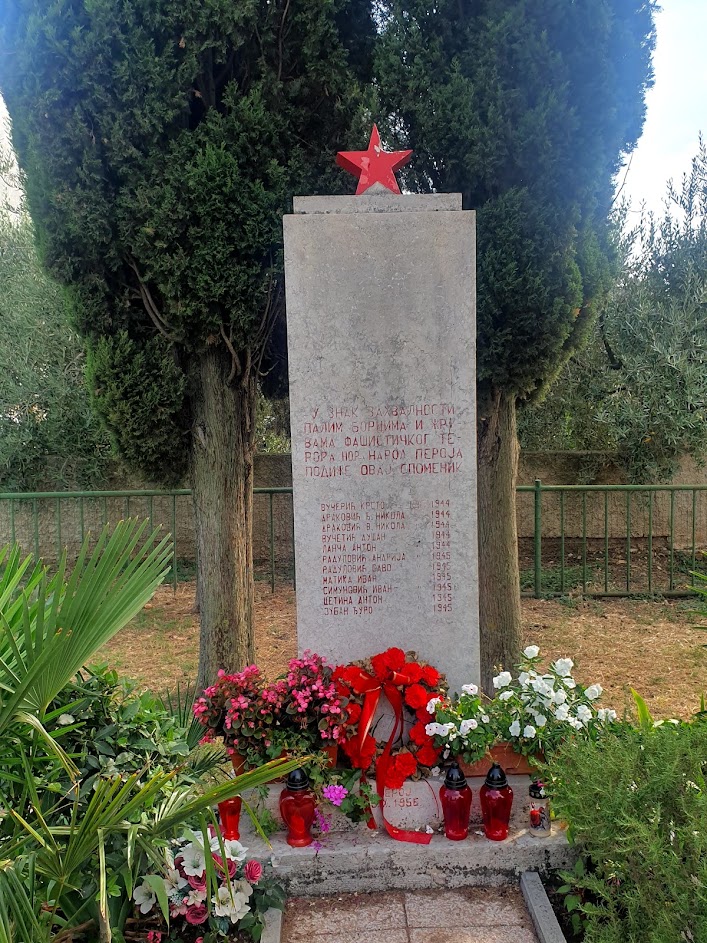
Six kilometres of pedalling uphill and I arrive in Vodnjan, the seat of the municipality to which Peroj and Barbariga also belong.
“I was born in 1942 here, during the reign of Italy”, a woman in front of the Church of St. Blaž in the town centre says. A few minutes earlier, while I was locking the bike, she was talking to a younger Roma woman and her son. She told the boy how his mother had to work so that she could buy him sweets and a soccer ball.
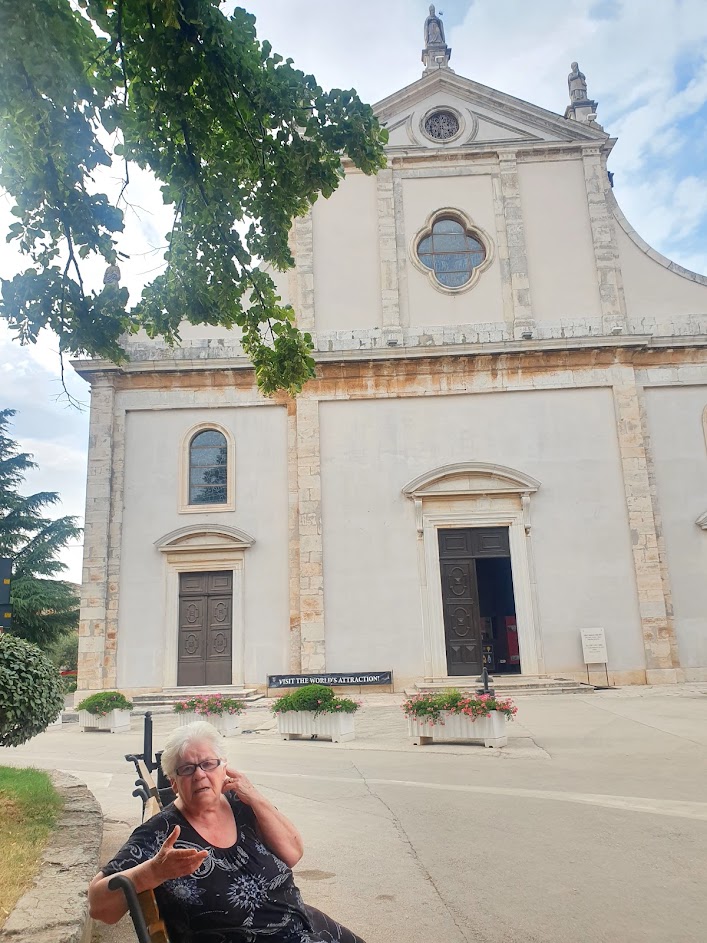
With a strong Italian accent, she explains to me that the Italians, unlike the Germans in Vojvodina, were not expelled after the war or sent to concentration camps. “They were free to return to Italy. There was a lot of propaganda. My father decided to stay and we never had any problems. We always had classes in Italian and spoke our language without hesitation,” she says and adds that there are about 100 Italian families even today in Vodnjan. As I was walking in the direction of the town square, where my interlocutor told me that I could buy ice cream, I heard her shouting something at a child in Italian. According to the 2011 census report, Vodnjan had a population of 3.119 – 55% of them are Croats, 20% Italians, 3% Roma, 2% Serbs, followed by Bosniaks, Montenegrins, etc.
The local newspaper Attinianum, which is bilingual (Croatian and Italian), has an interesting section that all local newspapers and portals should have – “Lipo – Bello / Grdo – Brutto” (Beautiful – Bello / Ugly – Brutto) with photos of how to and how not to do behave (throwing garbage, writing graffiti, bad parking).